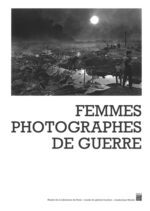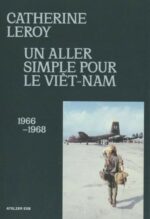Mary Cronk Farrell, journaliste primée et auteure de livres pour enfants, raconte l’histoire inspirante et fascinante de la femme qui a donné un visage humain à la guerre du Vietnam. Gros plan sur la guerre raconte l’histoire de Catherine Leroy, l’une des rares femmes photographes de la guerre, qui a documenté certains des combats les plus violents des 20 ans de conflit. Bien qu’elle n’ait jamais suivi de formation en photographie et qu’elle n’ait jamais voyagé à plus de quelques centaines de kilomètres de Paris, Leroy a quitté la maison à l’âge de 21 ans pour se rendre au Vietnam et documenter les visages de la guerre. Bien qu’on lui ait dit que les femmes n’avaient pas leur place dans un « monde d’hommes », elle était froide sous le feu, gravitait vers les batailles les plus intenses, marchait sur les slogs des soldats à travers la chaleur et la boue de la jungle, rampait dans les rizières, et est devenu le seul photojournaliste officiel à parachuter au combat avec des soldats américains. Leroy a pris des photos saisissantes qui n’ont donné aux États-Unis d’autre choix que de regarder les réalités de la guerre — montrant ce qu’elle a fait aux gens des deux côtés — des soldats blessés aux victimes civiles.
Plus tard, Leroy a été grièvement blessé par des éclats d’obus, mais cela ne l’a pas fait baisser plus d’un mois. Capturée par les Nord-Vietnamiens en 1968, elle s’est exprimée librement après avoir photographié ses ravisseurs, marquant une couverture dans le magazine Life. Lauréate du prix George Polk, l’un des prix les plus prestigieux en journalisme, Leroy a été l’une des photographes les plus célèbres au monde à son époque, et son héritage de bravoure et de compassion perdure aujourd’hui.
Farrell a interviewé des gens qui connaissaient Leroy, ainsi que des militaires et d’autres journalistes qui ont couvert la guerre. En plus d’une préface du photographe de guerre du Vietnam Nick Ut, lauréat du Prix Pulitzer, et d’une préface du journaliste lauréat du Prix Pulitzer Peter Arnett, le livre comprend une note de l’auteur, des notes de fin de texte, une bibliographie, une chronologie et un index ; preface by Nick Ut, foreword by Peter Arnett, photos en n.b. et en couleurs.
The incredible story of Catherine Leroy, one of the few woman photographers during the Vietnam War, told by an award-winning journalist and children’s author
From award-winning journalist and children’s book author Mary Cronk Farrell comes the inspiring and fascinating story of the woman who gave a human face to the Vietnam War. Close-Up on War tells the story of French-born Catherine Leroy, one of the war’s few woman photographers, who documented some of the fiercest fighting in the 20-year conflict. Although she had no formal photographic training and had never traveled more than a few hundred miles from Paris before, Leroy left home at age 21 to travel to Vietnam and document the faces of war. Despite being told that women didn’t belong in a “man’s world,” she was cool under fire, gravitated toward the thickest battles, went along on the soldiers’ slogs through the heat and mud of the jungle, crawled through rice paddies, and became the only official photojournalist to parachute into combat with American soldiers. Leroy took striking photos that gave America no choice but to look at the realities of war—showing what it did to people on both sides—from wounded soldiers to civilian casualties.
Later, Leroy was gravely wounded from shrapnel, but that didn’t keep her down more than a month. When captured by the North Vietnamese in 1968, she talked herself free after photographing her captors, scoring a cover story in Life magazine. A recipient of the George Polk Award, one of the most prestigious awards in journalism, Leroy was one of the most well-known photographers in the world during her time, and her legacy of bravery and compassion endures today.
Farrell interviewed people who knew Leroy, as well as military personnel and other journalists who covered the war. In addition to a preface by Pulitzer Prize-winning Vietnam War photographer Nick Ut and a foreword by Pulitzer Prize–winning journalist Peter Arnett, the book includes an author’s note, endnotes, bibliography, timeline, and index.



